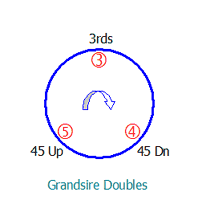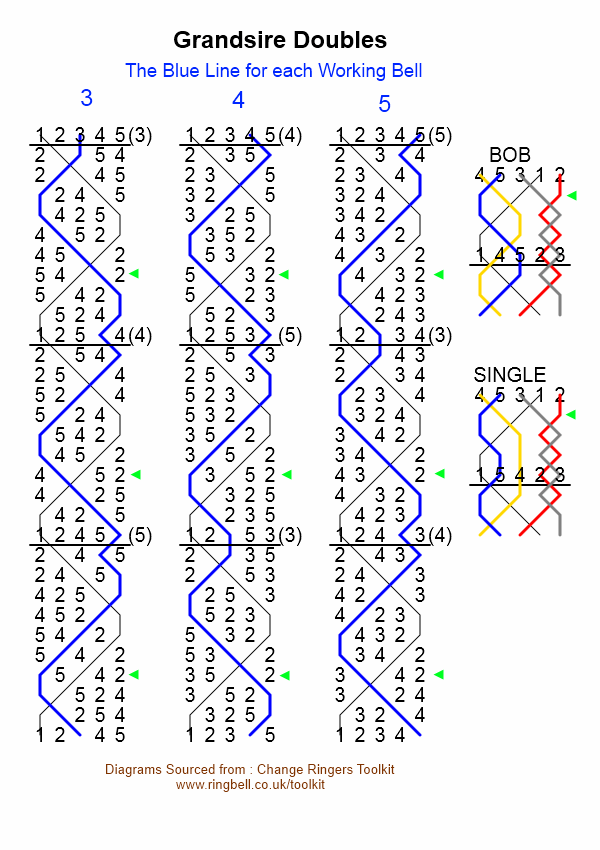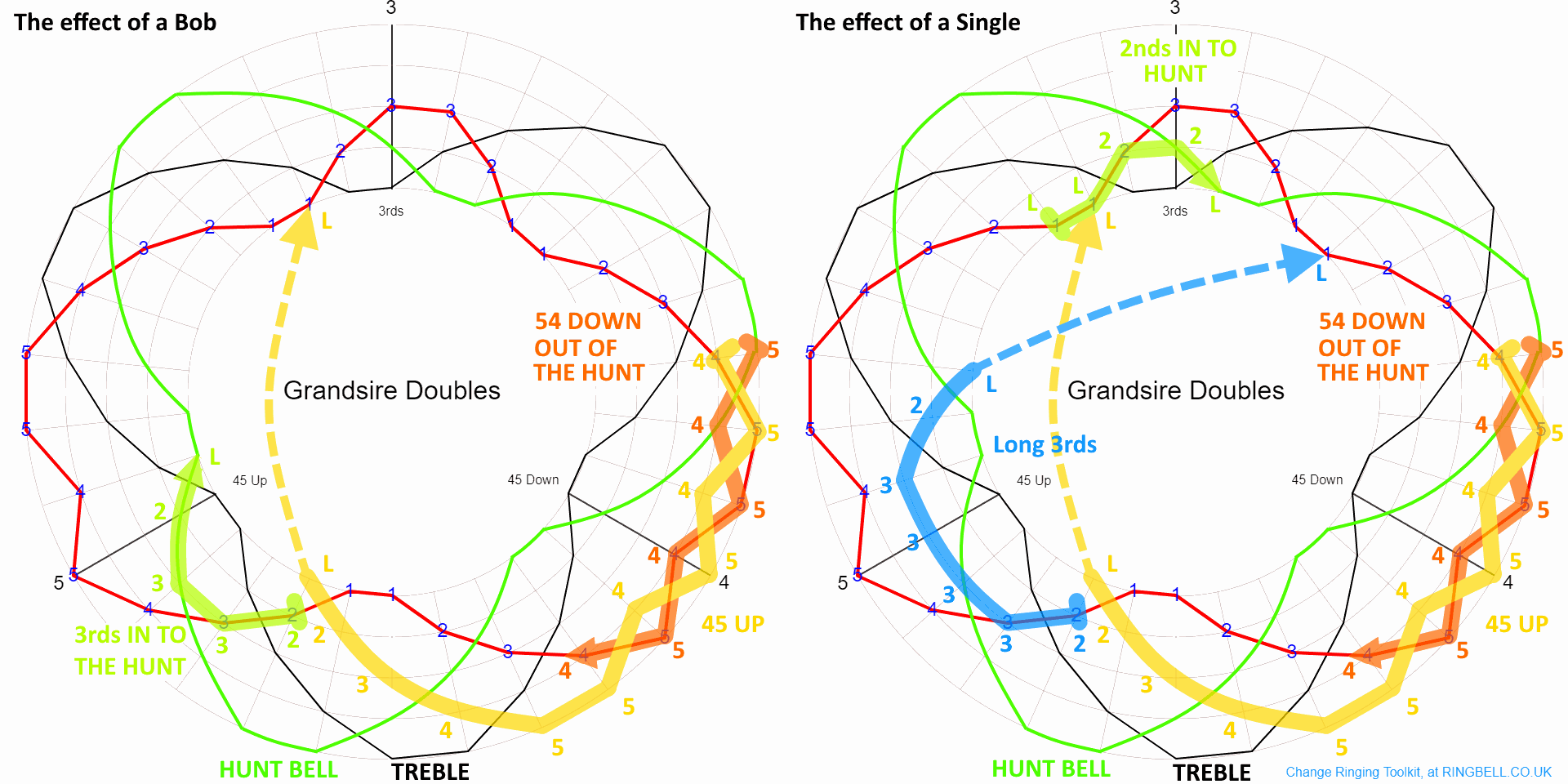Where do I start?
This diagram shows the order of work in the method. The accompanying table shows the first few changes in the method and the first work you do as you move around the circle.
 |
Bell No |
Starts With |
Starting Places |
First Work |
|---|---|---|---|---|
| 3 | One blow in 3rds then In to Lead | (3)32LL234.. | 4/5 Down | |
| 4 | Dodge Up to 5ths | (4)5432LL2.. | 4/5 Up | |
| 5 | Dodge Down to 4ths | (5)455432L.. | 3rds |
The 2nd bell is also a hunt bell, it starts by going into the lead and then plain hunts. As a signpost for the hunt bell ringer, you ring after the treble on the first blow in 7th place and again as you come down from the back, in 2nd place before leading.

 3rds
3rds Make 2nds, become the new hunt bell
Make 2nds, become the new hunt bell 4/5 Down
4/5 Down Double Dodge in 4/5 Up
Double Dodge in 4/5 Up 4/5 Up
4/5 Up Make 3rds, become the new hunt bell
Make 3rds, become the new hunt bell Make Long 3rds
Make Long 3rds HUNT BELL
HUNT BELL Double Dodge in 4/5 Down
Double Dodge in 4/5 Down